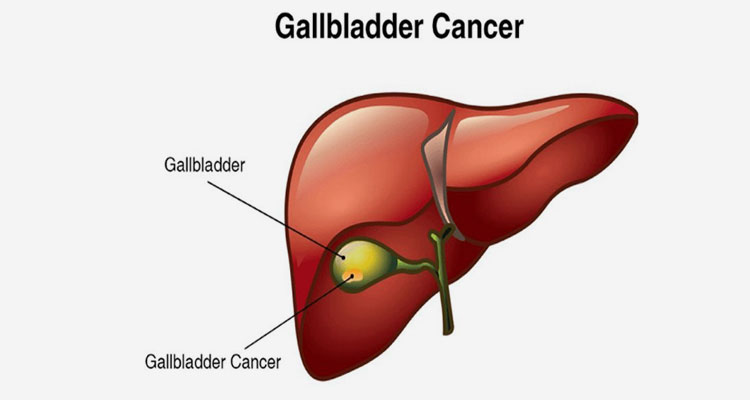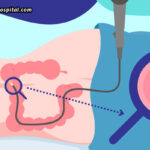Overview
Gallbladder cancer is an abnormal growth of cells that begins in the gallbladder.
Gallbladder is a small, pear-shaped organ on the right side of your abdomen, just beneath your liver. The gallbladder stores bile, a digestive fluid produced by your liver.
Gallbladder cancer is not uncommon now a days. When gallbladder cancer is discovered at its earliest stages, the chance for a cure is very good. But most gallbladder cancers are discovered at a late stage when the prognosis is often very poor.
Gallbladder cancer may not be discovered until it’s advanced because it often causes no specific signs or symptoms. Also, the relatively hidden nature of the gallbladder makes it easier for gallbladder cancer to grow without being detected.
Symptoms
Gallbladder cancer signs and symptoms may include:
- Abdominal pain, particularly in the upper right portion of the abdomen
- Abdominal bloating
- Losing weight without trying
- Yellowing of the skin and whites of the eyes (jaundice)
Causes
It’s not clear what causes gallbladder cancer.
Doctors know that gallbladder cancer forms when healthy gallbladder cells develop changes (mutations) in their DNA. A cell’s DNA contains the instructions that tell a cell what to do. The changes tell the cells to grow out of control and to continue living when other cells would normally die. The accumulating cells form a tumor that can grow beyond the gallbladder and spread to other areas of the body.
Most gallbladder cancer begins in the glandular cells that line the inner surface of the gallbladder. Gallbladder cancer that begins in this type of cell is called adenocarcinoma. This term refers to the way cancer cells appear when examined under a microscope.
Risk factors
Factors that can increase the risk of gallbladder cancer include:
- Sex. Gallbladder cancer is more common in women.
- Age. Your risk of gallbladder cancer increases as you age.
- A history of gallstones. Gallbladder cancer is most common in people who have gallstones or have had gallstones in the past. Larger gallstones may carry a larger risk. Still, gallstones are very common and even in people with this condition, gallbladder cancer is very rare.
- Other gallbladder diseases and conditions. Other gallbladder conditions that can increase the risk of gallbladder cancer include polyps, chronic inflammation and infection.
- Inflammation of the bile ducts. Primary sclerosing cholangitis, which causes inflammation of the ducts that drain bile from the gallbladder and liver, increases the risk of gallbladder cancer.
Diagnosis
Tests and procedures used to diagnose gallbladder cancer include:
- Blood tests. Blood tests to evaluate your liver function may help your doctor determine what’s causing your signs and symptoms.
- Procedures to create images of the gallbladder. Imaging tests that can create pictures of the gallbladder include ultrasound, computerized tomography (CT) and magnetic resonance imaging (MRI).
Determining the extent of gallbladder cancer
Once your doctor diagnoses your gallbladder cancer, he or she works to find the extent (stage) of your cancer. Your gallbladder cancer’s stage helps determine your prognosis and your treatment options.
Tests and procedures used to stage gallbladder cancer include:
Exploratory surgery. Your doctor may recommend surgery to look inside your abdomen for signs that gallbladder cancer has spread.
In a procedure called laparoscopy, the surgeon makes a small incision in your abdomen and inserts a tiny camera. The camera allows the surgeon to examine organs surrounding your gallbladder for signs that the cancer has spread.
Tests to examine the bile ducts. Your doctor may recommend procedures to inject dye into the bile ducts. This is followed by an imaging test that records where the dye goes. These tests can show blockages in the bile ducts.
These tests may include magnetic resonance cholangiography and endoscopic retrograde cholangiopancreatography (ERCP).
Additional imaging tests. Most people with gallbladder cancer will undergo a series of scans to help determine whether the cancer has spread or remains localized. Which scans should be performed vary depending on your circumstances. Common scans include a CT and MRI scans of the abdomen and chest.
Treatment
What gallbladder cancer treatment options are available to you will depend on the stage of your cancer, your overall health and your preferences.
The initial goal of treatment is to remove the gallbladder cancer, but when that isn’t possible, other therapies may help control the spread of the disease and keep you as comfortable as possible.
Surgery for early-stage gallbladder cancer
Surgery may be an option if you have an early-stage gallbladder cancer. Options include:
Surgery to remove the gallbladder. Early gallbladder cancer that is confined to the gallbladder is treated with an operation to remove the gallbladder (cholecystectomy).
Surgery to remove the gallbladder and a portion of the liver. Gallbladder cancer that extends beyond the gallbladder and into the liver is sometimes treated with surgery to remove the gallbladder, as well as portions of the liver and bile ducts that surround the gallbladder.
If your gallbladder cancer is very small and can be removed completely with cholecystectomy, you may not need additional treatments. If there’s a risk that cancer cells may remain after surgery, your doctor may recommend chemotherapy or other treatments.
Biliary drainage. Biliary drainage is a procedure to restore the flow of bile. It might involve placing a thin tube into the bile duct in order to drain the bile. Other strategies include bypass surgery to reroute the bile around the cancer and stents to hold open a bile duct being collapsed by cancer. Biliary drainage helps relieve signs and symptoms of cholangiocarcinoma.
Biliary drainage done by either ERCP OR EUS guided.
We put various types of stents to drain the bile duct.
- Plastic
- Metallic
- EUS guided LAMS
What is biliary stenting?
Sometimes the biliary drainage procedure may be extended with the placement of a permanent plastic or metal stent across the site of the bile duct blockage. Stents are usually inserted a few days after the initial drainage procedure and they keep the narrowed duct open without the need for a catheter.
Stenting may be preceded or followed by biliary dilatation, which involves dilating a segment of bile duct with a balloon to open up the stricture.
In recent years, endoscopic ultrasonography-guided biliary drainage (EUS-BD) in patients with failed ERCP has been reported to be an alternative method to PTBD or surgical interventions.
EUS-BD is presently classified into 3 techniques as follows:
(1) EUS-guided choledocoduodenostomy (EUS-CDS);
(2)EUS-guided hepatogastrostomy (EUS-HGS); and
(3) EUS-guided antegrade (EUS-AG) approach.
Chemotherapy
Chemotherapy uses drugs to kill rapidly growing cells, including cancer cells. Chemotherapy can be administered through a vein in your arm, in pill form or both.
Chemotherapy might be recommended after surgery if there’s a risk that some gallbladder cancer cells might remain. It can also be used to control the cancer if surgery isn’t an option.
Radiation therapy
Radiation therapy uses high-powered beams of energy, such as X-rays and protons, to kill cancer cells. The energy beams come from a machine that moves around you as you lie on a table.
Radiation therapy is sometimes combined with chemotherapy after surgery for gallbladder cancer if the cancer couldn’t be removed completely. Radiation therapy can also control gallbladder cancer that’s causing pain if surgery isn’t an option.
Targeted drug therapy
Targeted drug treatments focus on specific weaknesses present within cancer cells. By blocking these weaknesses, targeted drug treatments can cause cancer cells to die. Targeted drugs might be an option for people with advanced gallbladder cancer.
Your doctor may test your cancer cells to see which targeted drugs are most likely to work for you.
Immunotherapy
Immunotherapy is a drug treatment that helps your immune system to fight cancer. Your body’s disease-fighting immune system might not attack cancer because the cancer cells produce proteins that make it hard for the immune system cells to recognize the cancer cells as dangerous. Immunotherapy works by interfering with that process.
Immunotherapy might be an option for treating advanced gallbladder cancer.








